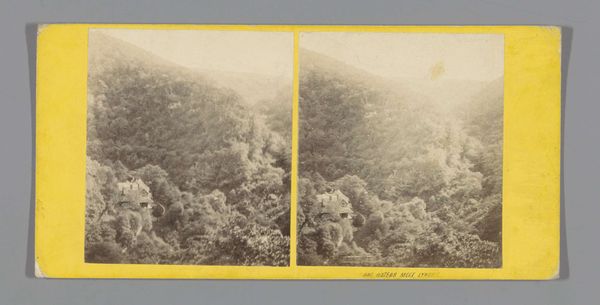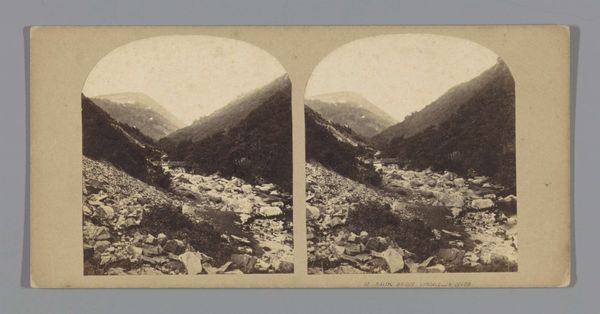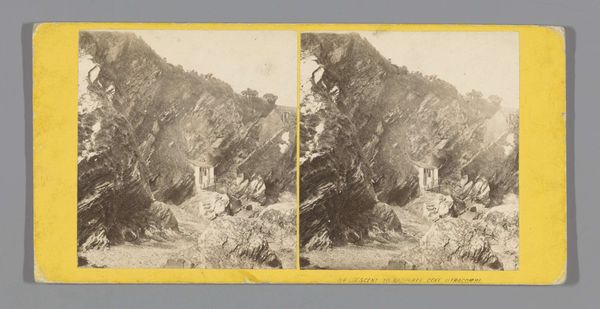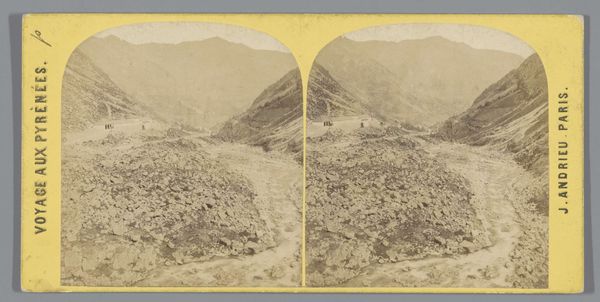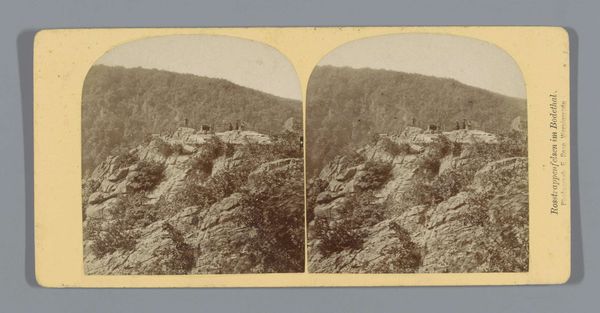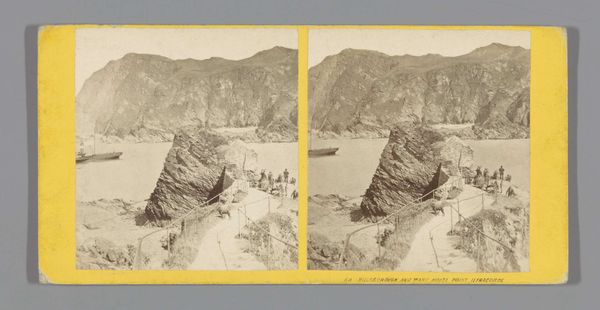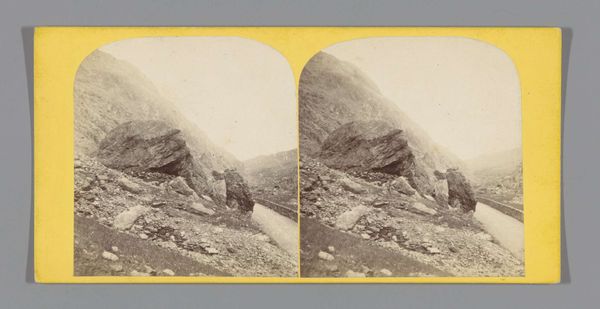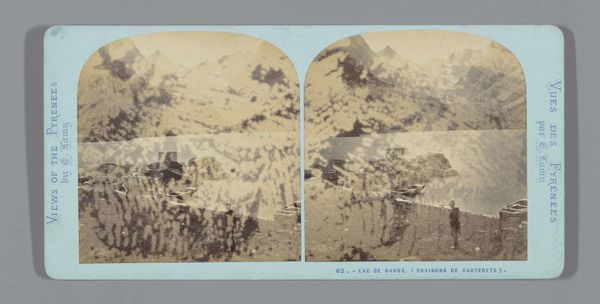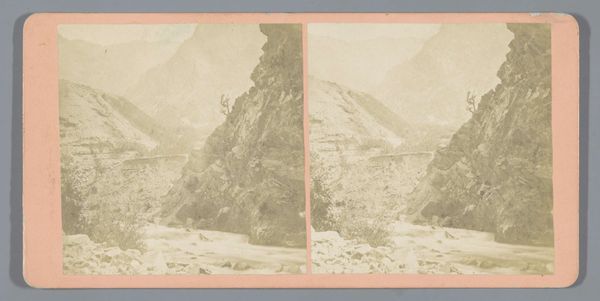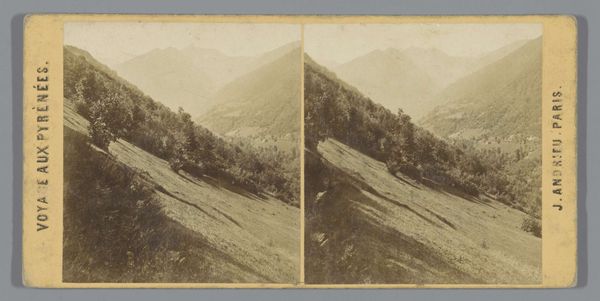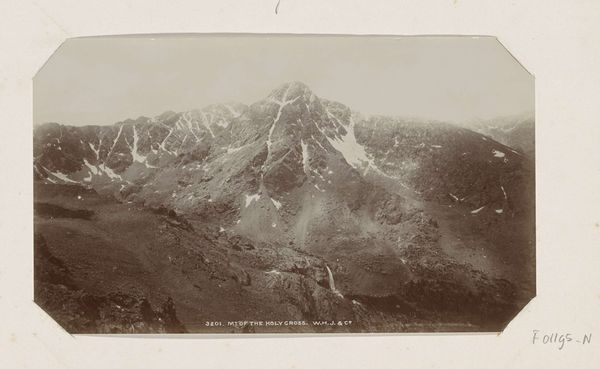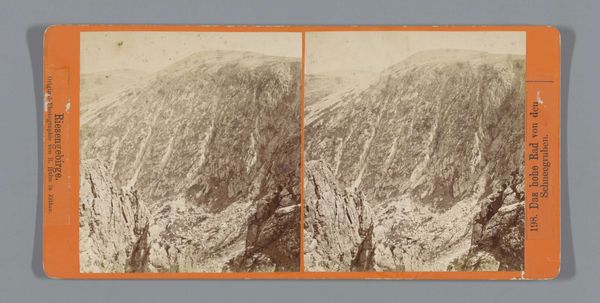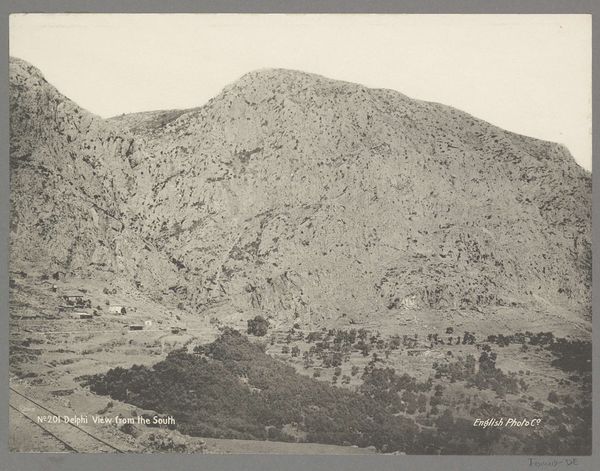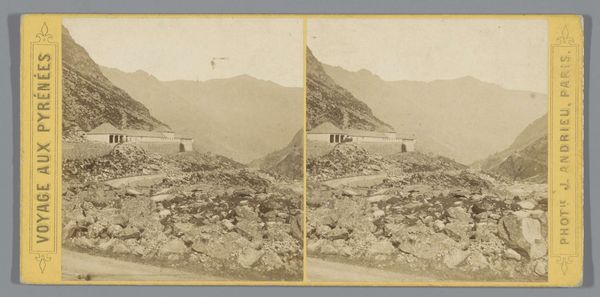
Dimensions: height 85 mm, width 170 mm
Copyright: Rijks Museum: Open Domain
Editor: This gelatin-silver print, titled "Gezicht op een beek bij Lynmouth," was created by Francis Bedford sometime between 1850 and 1880. It depicts a densely wooded landscape, seemingly untouched. What social narratives do you see interwoven within this image? Curator: The social narrative lies within the landscape itself, and Bedford’s choice to depict it. The Romantic era, of which this piece gestures towards, emphasized a connection to nature as a respite from industrialization. The growing urban centers and factories came at the expense of devastating the environment and the working class. Do you see this potentially as a visual protest? Editor: That’s a very interesting way to frame it. I was caught up in its surface beauty, in Bedford's photographic technique and the light cascading through the valley, but thinking of it as a resistance to industrialization gives the piece so much more complexity. So you see it almost as a commentary? Curator: Indeed. Landscape photography like this served not only as documentation, but also as a deliberate act of preservation, reminding viewers of what was at stake. Who had access to the landscapes, and who was being kept out? What sort of idyllic narrative is presented? Editor: So, the act of creating this image itself becomes a political statement about land use and environmentalism, decades before those conversations really entered the mainstream. It speaks volumes about power structures that defined Victorian society and our continuing social connection to the land. I am very thankful for your insight on it. Curator: Likewise. Understanding the context gives this idyllic image a renewed, vital urgency for contemporary audiences.
Comments
No comments
Be the first to comment and join the conversation on the ultimate creative platform.
